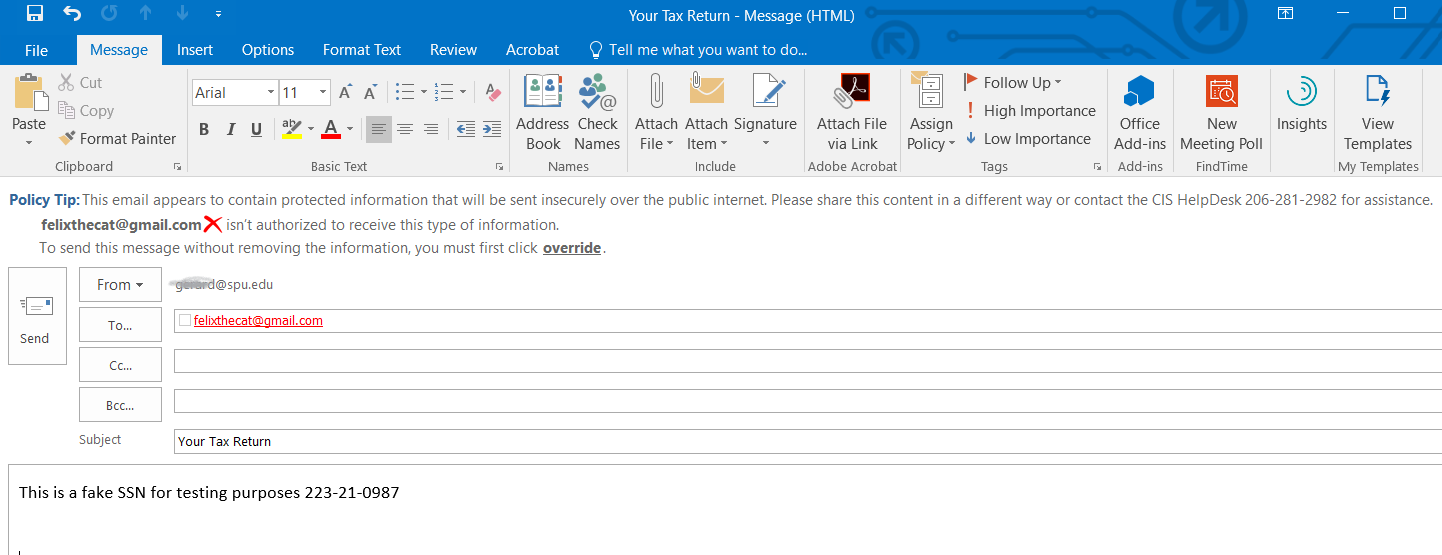Data Loss Prevention
How does DLP work?
DLP looks at the Recipients (To/CC/BCC), subject line, message body, and the contents of attachments in real-time as a message is being composed for any of the following:
- Credit Card Numbers
- Social Security Numbers
- Bank Account Numbers
- Driver's License Numbers
If DLP detects one of the above, and one or more message recipients are to non-SPU email addresses, Email DLP Notification occurs.
Email DLP Notification
A "Policy Tip" is presented above the "To:" line in the message being composed in most email clients. This Policy Tip provides several details concerning the draft message:
- The Policy Tips citation itself (see image at right)
- Verification of the external email recipient in question (in this case, felixthecat@...)
Once a DLP Policy alert is triggered, the email will be blocked from being sent. When this happens, the external recipient will receive NO notification that the email was blocked, whereas, the sender will receive an email notification notifying them of the message being blocked and a link to this page as well as other remediation information.
What if DLP is wrong?
Sometimes an individual may decide that there is a sound business justification as to why the email should be permitted. At other times, DLP may flag on strings of data that are not sensitive in nature - what we call a "false positive." For such cases, please contact the Business Systems Team for assistance: cis-bst@spu.edu. We will work to either find an alternate method of delivering the information in the email to the recipient and/or review how DLP was triggered, to find a way to deliver the information securely.
What else do I need to know?
CIS continues to refine and improve the tools available for effective and efficient sharing of information, and appreciates your help by ensuring your business processes share information securely.
If you have any questions or concerns, please contact the CIS Help Desk at 206-281-2982 or help@spu.edu.
